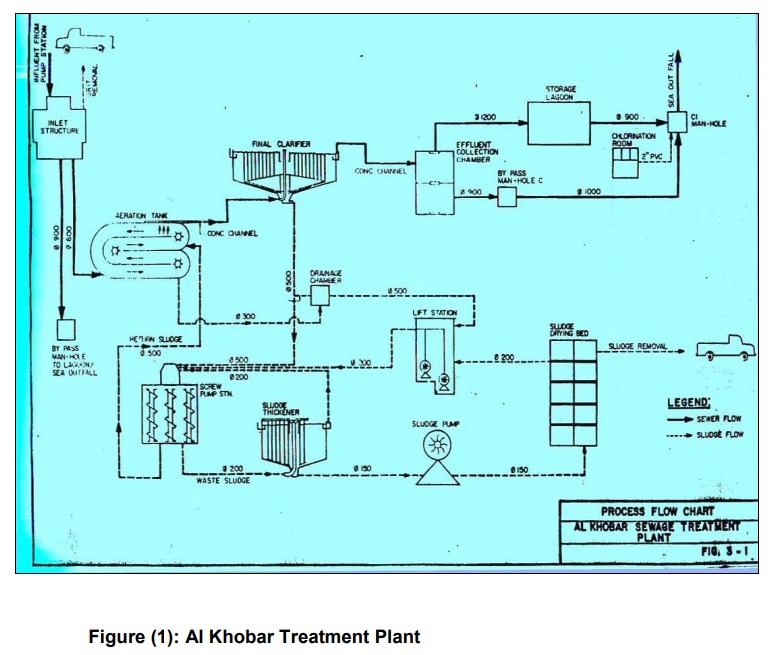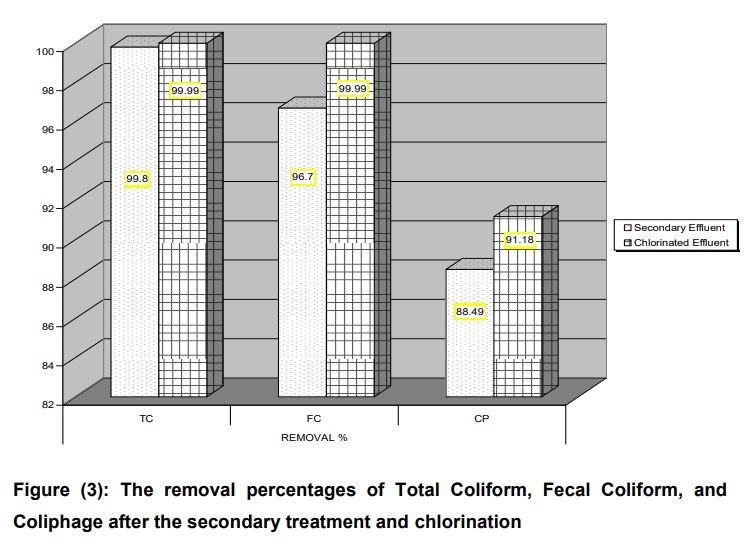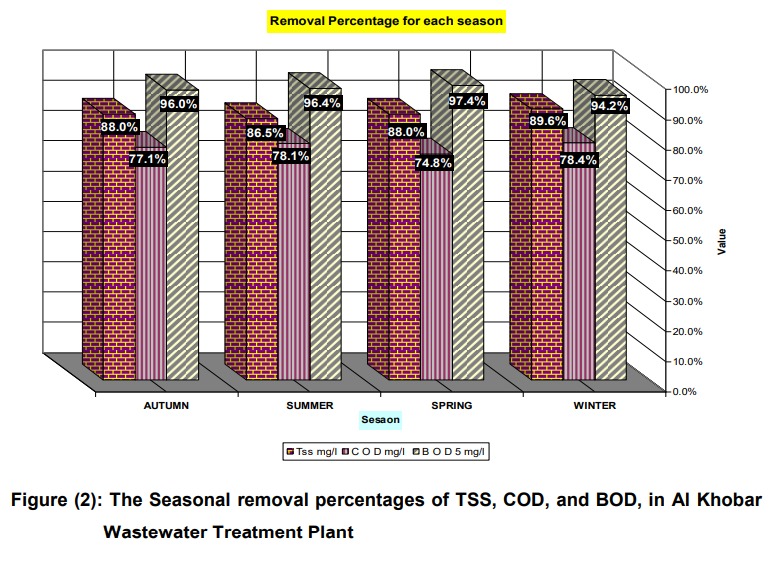Country:
Saudi Arabia
Location:
Al-Khobar Wastewater Treatment Plant, situated in the Eastern Province of Saudi Arabia.
Time period :
2007-2008.
Implementing Institution/ Organization:
The study was implemented by the Environmental Health Department at two institutions:
1. High Institute of Public Health, Alexandria University, Egypt
2. Applied Medical Sciences College, King Faisal University, Saudi Arabia
Goals
1. Assess the Treatment Efficiency:
+
Evaluate the plant’s performance in removing pollutants, including Total Suspended Solids (TSS), Biochemical Oxygen Demand (BOD), Chemical Oxygen Demand (COD), and microbial contaminants.
2.
Investigate Reuse Potential:
+
Examine the feasibility of using the treated wastewater for irrigation and other applications, considering local and international guidelines (FAO and Saudi standards).
3.
Ensure Environmental and Human Health Safety:
+
Determine whether the treated effluent meets safety standards to minimize health risks and secure a safe environment for potential reuse.
4.
Provide Recommendations for Improvement:
+
Offer practical suggestions for enhancing treatment processes, particularly to meet stricter local standards and optimize the reuse of the reclaimed water.
Objectives
1. Evaluate Pollutant Removal Efficiency:
+
Measure the plant’s effectiveness in removing key pollutants, including TSS, BOD, COD, and microbial contaminants (e.g., coliforms and coliphage), through both biological and chlorination processes.
2.
Analyze Seasonal Variations:
+
Study the impact of seasonal changes on the quality of influent and effluent, examining how different conditions affect treatment efficiency.
3.
Conduct Microbiological and Chemical Assessments:
+
Perform detailed microbiological and chemical analyses on samples from various stages of treatment, assessing compliance with FAO and Saudi standards for irrigation water.
4.
Identify Health and Environmental Risks:
+
Evaluate health risks associated with effluent reuse, including potential exposure to pathogens, heavy metals, and other contaminants, to ensure safe applications for irrigation.
5.
Explore Advanced Treatment Options:
+
Investigate additional treatment techniques (e.g., reverse osmosis, chlorine-peracetic acid mix) to improve effluent quality and ensure compliance with stricter standards.
6.
Assess Economic and Environmental Benefits:
+
Examine the potential economic and environmental advantages of reusing treated wastewater for irrigation, including water conservation, reduced pollution, and nutrient recycling.
7.
Develop Reuse Guidelines:
+
Provide recommendations and guidelines for the safe and effective reuse of treated wastewater, particularly in agricultural applications, to support sustainable water management practices in the region.
Methodology (approach)
1. Field Survey and Process Mapping
- Conducted an elaborate field survey to identify all treatment processes and sampling points throughout the plant.
- Studied each treatment unit to assess its efficiency, covering physical, biological, and chemical treatment stages.
2. Sampling and Data Collection
- Samples were collected from different stages of the treatment process (influent, secondary effluent, and final chlorinated effluent).
- Sampling was done on a daily, weekly, and monthly basis over a full year to capture seasonal variations.
3. Laboratory Analysis
A) Physicochemical Analysis:
+Tested for pH, Total Suspended Solids (TSS), Biochemical Oxygen Demand (BOD), Chemical Oxygen Demand (COD), nitrogen, phosphates, chlorides, and other relevant parameters.
B) Microbiological Analysis:
+ Assessed Total Coliform (TC), Fecal Coliform (FC), and coliphage concentrations using standard enumeration methods (Most Probable Number technique).
C) Heavy Metals and Trace Elements:
+ Measured concentrations of elements like aluminum, arsenic, cadmium, copper, fluoride, iron, lead, and zinc to ensure they were within safe limits for reuse.
4. Data Analysis and Efficiency Assessment
- Analyzed collected data using standard statistical methods to evaluate the efficiency of each treatment stage.
- Studied seasonal impacts on treatment efficiency and influent characteristics.
5. Reuse Feasibility Assessment
- Compared the quality of the treated effluent against FAO guidelines and Saudi standards for agricultural reuse.
- Assessed the potential for utilizing the treated wastewater for irrigation based on its nutrient content and water quality.
6. Recommendations and Optimization Strategies
-
Based on the analysis, proposed recommendations for improving the treatment process, such as advanced treatment methods (e.g., reverse osmosis) and enhanced disinfection strategies.
Study results
1. Treatment Efficiency
- The plant demonstrated effective pollutant removal across different treatment stages:
A) Total Suspended Solids (TSS): Removal efficiency ranged from 86.5% to 89.6%.
B) Biochemical Oxygen Demand (BOD): Removal efficiency ranged from 94.2% to 97.4%.
C) Chemical Oxygen Demand (COD): Removal efficiency ranged from 74.8% to 78.4%.
2. Microbiological Contaminant Removal
- The treatment processes, including chlorination, showed high removal rates for microbial contaminants:
A) Total Coliforms (TC): Removal efficiency reached 99.99%.
B) Fecal Coliforms (FC): Removal efficiency also reached 99.99%.
C) Coliphage (CP): Removal efficiency was slightly lower at 91.2%, indicating some resistance to chlorination.
3. Trace Elements and Heavy Metals
- The concentrations of trace elements (e.g., aluminum, arsenic, cadmium, copper, lead) were found to be below the maximum recommended levels set by FAO guidelines and Saudi standards, suggesting minimal industrial contamination.
4. Compliance with Standards
While the effluent quality met the FAO guidelines for reuse in agriculture, it failed to comply with the stricter Saudi standards for the following parameters:
- Total Coliforms: Average values were 749 counts/100 ml, exceeding the Saudi standard of 220 counts/100 ml.
A) Turbidity: Recorded at 27.6 NTU, compared to the standard limit of 1 NTU.
B) Total Suspended Solids (TSS): Recorded at 20.52 mg/l, exceeding the limit of 10 mg/l.
5. Reuse Potential and Enviroeconomic Benefits
A) The treated effluent has significant reuse potential for irrigation, capable of supporting approximately 8,760 hectares of agricultural land annually.
B) Nutrient content in the treated effluent (e.g., nitrogen and phosphorus) could reduce the need for commercial fertilizers, offering additional economic value.
C) Reuse of the treated wastewater could help conserve groundwater resources, reduce pollution in the Arabian Gulf, and provide a sustainable water source in the arid region.
6. Seasonal Variability
A) Seasonal changes affected the influent characteristics and treatment efficiency, with higher temperatures in summer improving biological treatment performance.
B) Peak flow rates during Islamic feasts temporarily increased the influent volume, impacting the plant's operational capacity.
7. Health and Safety Concerns
- Despite high removal rates of microbial contaminants, the presence of coliphages and elevated levels of coliforms highlighted potential health risks, necessitating additional treatment or disinfection methods.
Conclusions
1. Effective Treatment for Irrigation Use:
A) The Al-Khobar WWTP demonstrated effective removal of physical, chemical, and microbiological contaminants, making the treated wastewater suitable for irrigation under the FAO guidelines.
B) The plant's treatment processes, including biological treatment and chlorination, achieved high removal rates for Total Suspended Solids (TSS), Biochemical Oxygen Demand (BOD), and Chemical Oxygen Demand (COD).
2. Challenges in Meeting Local Standards:
A) Although the treated effluent met international reuse guidelines (FAO), it failed to fully comply with the stricter Saudi standards, particularly for Total Coliforms (TC), turbidity, and TSS levels.
B)
Additional treatment or modifications would be necessary to ensure the effluent consistently meets the required standards for safe agricultural reuse in Saudi Arabia.
3. High Microbial Removal Efficiency but Residual Risks:
A) The combination of biological treatment and chlorination achieved 99.99% removal of Total Coliforms (TC) and Fecal Coliforms (FC).
B) However, the study identified some resistance of coliphages to chlorination, highlighting a potential risk of viral contamination in the final effluent.
4. Low Industrial Contamination:
A) The concentrations of trace elements and heavy metals (e.g., aluminum, arsenic, cadmium, lead) were well below the maximum allowable limits, indicating minimal industrial wastewater intrusion and making the treated effluent safer for reuse.
5. Significant Reuse Potential:
A)
The treated wastewater offers a valuable alternative water source for agricultural irrigation, capable of irrigating an estimated 8,760 hectares annually.
B)
The nutrient content (nitrogen and phosphorus) in the effluent could reduce the need for chemical fertilizers, providing additional economic and environmental benefits.
6. Need for Advanced Treatment:
A) To meet Saudi standards and enhance the safety of the reclaimed water, the study recommended applying a portion of the secondary treated effluent to advanced treatment processes (e.g., reverse osmosis) before final disinfection.
B)
This approach would ensure better compliance with quality standards and reduce potential health risks.
7. Environmental and Health Benefits:
A) Properly managed reuse of the treated wastewater could help conserve groundwater resources, reduce pollution in the Arabian Gulf, and support sustainable agricultural practices.
B) With improved treatment and monitoring, the reclaimed water could provide a safe and reliable resource in the arid climate of Saudi Arabia.
Overall Conclusion:
The Al-Khobar WWTP has the potential to play a significant role in water conservation and sustainable irrigation practices in Saudi Arabia. However, enhancements in the treatment process are needed to meet stricter local standards and ensure the safety and reliability of the reclaimed water for agricultural use.
Recommendations
1. Advanced Treatment for Compliance with Standards
A)
Implement advanced treatment methods, such as reverse osmosis or enhanced filtration, for a portion of the secondary effluent to improve compliance with Saudi standards for turbidity, TSS, and total coliform levels.
B)
This targeted approach is more cost-effective than applying advanced treatment to the entire effluent stream.
2. Improved Disinfection Techniques
A)
Increase the chlorination detention time or consider a combination of chlorine and peracetic acid (PAA) to enhance microbial removal, especially for resistant pathogens like coliphages.
B)
This combination may also reduce the formation of chloroorganic compounds, improving the safety of the effluent for reuse.
3. Seasonal Adjustments and Capacity Planning
A)
Conduct additional studies to understand and manage the effects of seasonal variations on influent characteristics and treatment efficiency.
B)
Adjust treatment processes during periods of peak flow (e.g., Islamic feasts) to ensure consistent treatment quality under varying operational loads.
4. Ongoing Monitoring of Trace Elements and Heavy Metals
A)
Continue regular testing for trace elements and heavy metals, especially if there is potential for industrial wastewater intrusion.
B)
Ensure concentrations remain below the recommended limits to avoid soil contamination and health risks when used for irrigation.
5. Sodium Adsorption Ratio (SAR) Assessment
A)
Conduct a detailed study on the Sodium Adsorption Ratio (SAR) of the treated effluent to prevent adverse effects on soil structure, infiltration rate, and soil permeability.
B)
This assessment is essential for ensuring the long-term sustainability of using treated wastewater in agriculture.
6. Field Trials on Crops for Safety Assurance
A)
Carry out field trials on various crops, including vegetables and fruits, to evaluate potential health impacts on farm workers and consumers.
B)
These studies would help determine the safest types of crops for irrigation with reclaimed wastewater and minimize health risks.
7. Explore Enviroeconomic Benefits
A)
Promote the use of reclaimed wastewater for irrigation as a sustainable alternative water source, especially in arid regions like Saudi Arabia.
B)
Emphasize the economic benefits of reduced fertilizer costs due to the nutrient content (e.g., nitrogen and phosphorus) in the treated effluent, which can support plant growth and soil fertility.
8. Awareness and Training Programs
A)
Develop awareness and training programs for farmers, facility operators, and local authorities on the safe use and handling of reclaimed wastewater for irrigation.
B)
These programs should cover guidelines for application rates, crop selection, and health and safety precautions.
Overall Recommendation
By implementing these enhancements and regularly monitoring performance, the Al-Khobar WWTP can better serve as a sustainable resource for agricultural irrigation while ensuring public health and environmental protection. These recommendations support the dual goals of water conservation and enhanced food security in an arid region.
Lessons learned
1. Advanced Treatment is Essential for Meeting Local Standards
While the treated effluent met international guidelines (e.g., FAO), it struggled to comply with the more stringent local standards in Saudi Arabia. This highlights the importance of implementing advanced treatment processes, such as reverse osmosis, for a portion of the effluent to ensure consistent compliance and safe reuse.
2. Microbial Contaminants Require Robust Disinfection
The presence of resistant microorganisms, such as coliphages, demonstrated the need for more effective disinfection strategies beyond traditional chlorination. Exploring alternative or combined disinfection methods (e.g., chlorine with peracetic acid) can help address microbial risks and ensure safer effluent quality for reuse.
3. Seasonal Variations Impact Treatment Efficiency
Seasonal changes significantly influenced the quality of the influent and the performance of the treatment processes. Understanding these variations is crucial for optimizing plant operations, especially during peak flow periods, to maintain consistent treatment efficiency.
4. Potential for Reuse is High, but Requires Careful Planning
The study showed that treated wastewater can be a valuable resource for irrigation, especially in water-scarce regions. However, proper planning, including crop selection and application guidelines, is necessary to maximize benefits and mitigate health risks.
5. Monitoring and Flexibility are Key to Adaptation
The variability in influent quality and the challenges in meeting stringent standards underscore the importance of continuous monitoring and maintaining flexibility in the treatment processes. Regular testing of trace elements, heavy metals, and microbial contaminants is critical for ensuring safe and reliable reuse.
6. Nutrient Recovery Provides Economic Value
The nutrient content (e.g., nitrogen and phosphorus) in the treated wastewater can reduce the need for commercial fertilizers, offering significant economic advantages. Recognizing and leveraging this value can enhance the sustainability of wastewater reuse projects.
7. Public Awareness and Stakeholder Involvement are Crucial
Successful reuse of treated wastewater depends on the awareness and acceptance of local communities, farmers, and stakeholders. Education and training programs on the benefits, risks, and safe handling practices are essential for promoting widespread adoption.
8. Site-Specific Approaches Yield Better Outcomes
The success of wastewater reuse projects depends on tailoring treatment processes and reuse applications to the specific conditions of the location, including climate, water demand, and local standards. A one-size-fits-all approach may not be effective, particularly in diverse environmental and regulatory contexts.
Overall Lesson Learned
Effective wastewater treatment and reuse require a combination of advanced technology, adaptive management, and community engagement. By addressing the specific challenges identified in the Al-Khobar case study, future projects can enhance the sustainability and safety of water reuse in arid and semi-arid regions.
References (resources) Found is the case study
1. Linsley RK, Franzini JB, Freyberg DL,
Tchobanoglous G. Water-Resources
Engineering. New York: McGrawHill;1998.
2. Khaled MA. Recent trends and
developments: reuse of wastewater in
agriculture. Environmental
Management and Health. 1998;
9(2):79-89
3. FAO/RNE,WHO/EMRO. FAO.
Wastewater re-use. Proceedings of
the expert consultation for launching
the regional network on wastewater
re-use in the Near East. Cairo: 2003.
4. USEPA. Guidelines for Water Reuse.
(online) 2004 (July 2008). URL: http://www.epa.gov/ORD/NRMRL/pub
s/625r04108/625r04108chap8.pdf
5. Lazarova V, Savoye P, Janex ML,
Blatchley III E.R, Pommepuy M.
Advanced wastewater disinfection
technologies: state of the art and
perspective. Water Sciences
Technology. 1999;40(4-5):203-214.
6. Saleem M, Bukhari AA, Al-Malack MH.
Removal Efficiencies of Indicator
Micro-organisms in the Al-Khobar
Wastewater Treatment Plants.
Environmental Engineering Science.
2004;17(4):312- 26
7. Eaton AD, Clesceri LS, Rice EW,
Greenberg AE, Franson M. Standard
Methods for the Examination of Water
and Wastewater, 21th edition.
Washington, DC: APHA-AWWA-WEF;
2005.
8. Fattouh FA, Al-Kahtani MT, The
Efficiency of Removal of Total
Coliforms, Fecal Coliforms and
Coliphages in a Wastewater
Treatment Plant in Riyadh. Pakistan
Journal of Biological Sciences. 2002;5
(4):466-70.
9. World Health Organization. WHO
guidelines for the safe use of
wastewater in agriculture: Draft Report
of the World Health Organization.
WHO: Geneva Switzerland; 2005
10. United Nations Environment Program.
UNEP/ROWA-GPA SEWAGE.RW.
Overview of the socio-economic
aspects related to the management of
municipal wastewater in West Asia
(including all countries bordering the
Red Sea and Gulf of Aden). Workshop
on Municipal Wastewater
Management. 10-12 November 2001;
Bahrain.2001.



